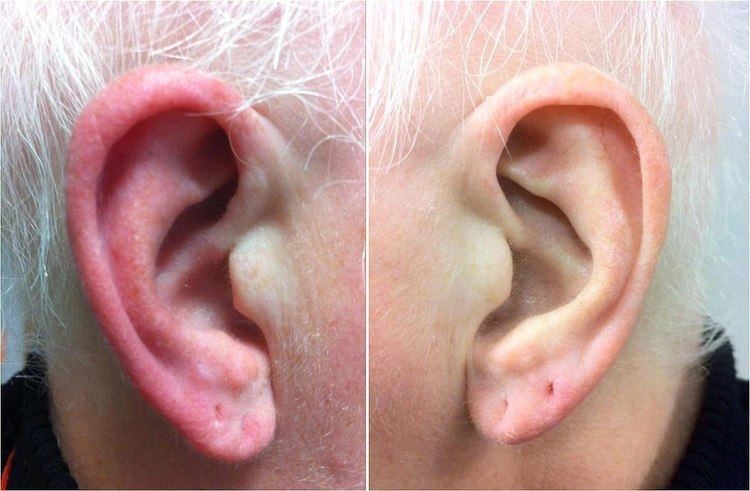 | ||
Red ear syndrome (RES) is a rare disorder of unknown etiology which was originally described in 1994. The defining symptom of red ear syndrome is redness of one or both external ears, accompanied by a burning sensation. A variety of treatments have been tried with limited success.
Contents
Characteristics
Attacks of skin redness and burning sensation or pain in one or both external ears are the only common symptom. Pain is often most pronounced at the ear lobe, and sometimes radiates to the jawbone and cheek. The pain is normally mild, but has occasionally been described as severe. The attacks can last seconds or hours, with 30 minutes to an hour being typical. Most patients have daily attacks, ranging from 20 a day to a few a year.
Causes
It is believed this syndrome may represent an auriculo-autonomic headache or be part of the group of disorders known as trigeminal autonomic cephalgias, which includes cluster headaches. It is more often associated with migraine in younger people, while late-onset RES may result from pathology of the upper cervical spine or trigeminal autonomic cephalgia.
Epidemiology
Red ear syndrome is considered rare, but the prevalence is unknown. There are only about 100 cases described in the medical literature, with a male-to-female ratio of 1:1.25. It has been reported in patients from ages 4 to 92, with an average onset at age 42.
Management
Red ear syndrome has proven difficult to treat. The most widely attempted medication is gabapentin, with one case series finding that seven of eight patients on gabapentin showed improvement in attack frequency and ear color. Smaller studies have reported limited success in certain patients using amitriptyline, flunarizine, imipramine, verapamil, and propranolol. Appropriate medication may differ depending on the underlying cause of the individual's symptoms. Using an ice pack to cool the ear during an attack can provide relief.
